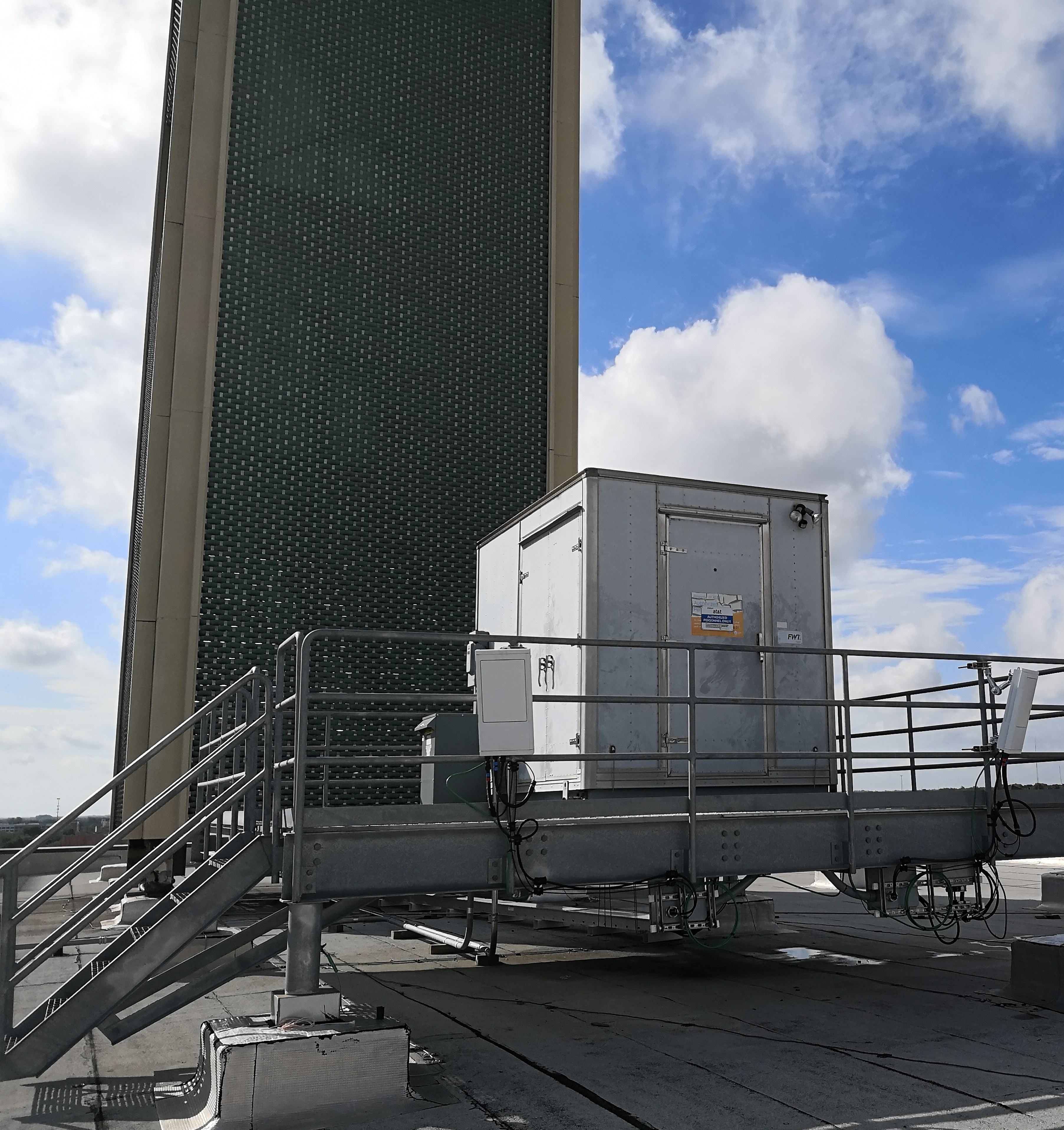AT&T Makes World’s First Standards-Based Mobile 5G Millimeter Wave Connection
Names additional 5G cities, highlights innovation center R&D and overall investment, and announces Ericsson, Nokia, and Samsung as 5G suppliers
AT&T* plans to introduce mobile 5G in parts of five additional cities – Houston, Jacksonville, Louisville, New Orleans, and San Antonio – this year. These new cities are in addition to seven cities where we’ve already announced plans to launch mobile 5G this year – Atlanta, Charlotte, Dallas, Indianapolis, Oklahoma City, Raleigh, and Waco.
Looking forward to early 2019, we’ll keep our 5G momentum going and plan to introduce mobile 5G in parts of Las Vegas, Los Angeles, Nashville, Orlando, San Diego, San Francisco, and San Jose. From these 19 cities, we’ll continue to expand.
Over the weekend, in Waco, Texas, working with our key technology collaborators, we made the world’s first wireless 5G data transfer over millimeter wave using standards-based, production equipment with a mobile form factor device. Not a lab. Not preproduction hardware. Not emulators. And fully compliant with global standards.
”We’re at the dawn of something new that will define the next decade and generation of connectivity,” said Andre Fuetsch, chief technology officer, AT&T Communications. “Future smart factories and retailers, self-driving cars, untethered virtual and augmented realities, and other yet to be discovered experiences will grow up on tomorrow’s 5G networks. Much like 4G introduced the world to the gig economy, mobile 5G will jumpstart the next wave of unforeseen innovation.”
How we’re doing it
Our 5G deployment strategy will include using millimeter wave spectrum to deploy 5G in pockets of dense areas – where demand on our network is high and extra capacity and coverage is needed most. In other parts of urban areas and in suburban and rural areas, we plan to deploy 5G on our mid and low-band spectrum holdings. We’ve been encouraged by the performance of mmWave in our 5G trials and found that it performs better than expected and is successful in delivering ultra-high wireless speeds under a variety of conditions.
In addition, our foundational 5G Evolution technology is now live in more than 200 markets, reaching 400+ markets this year. 5G Evolution markets are locations where we've deployed the latest technologies that enable peak theoretical wireless speeds of at least 400 megabits per second** on capable devices.
For this weekend’s successful Waco activation, our engineering teams used a Qualcomm Technologies’ smartphone form factor test device with integrated Qualcomm® Snapdragon™ X50 5G modem and RF subsystem and Ericsson 5G-NR capable radios connected to our virtual 3X standards compliant core. This helps us to ensure that when smartphones and other mobile devices are available to consumers, our mobile 5G network will be ready to go.
“This weekend’s call between a 5G base station in the field and a smartphone form factor 5G device brings us one step closer to commercial 5G networks and mobile devices,” said David Nash, vice president, Business Development, Qualcomm Technologies, Inc. “We will continue to work with industry leaders such as Ericsson and AT&T to help ensure consumers will be able to experience the benefits of commercial 5G networks and mobile devices.”

Who we’re working with
To help us build our mobile, nationwide 5G network, we’ve selected Ericsson, Nokia, and Samsung as our technology suppliers. Working with these three suppliers, we’ve already started deploying 3GPP Release 15 compliant equipment in a handful of our early 5G cities.
“5G is coming, faster than many realize. By working closely with AT&T and other key collaborators on successful 5G trials over the years, we’ve brought 3GPP mobility standards-based 5G technology closer to commercial reality today,” said Fredrik Jejdling, executive vice president and head of Business Area Networks, Ericsson. “Our joint efforts will enable AT&T’s mobile 5G network to ultimately deliver on the future promises of high-speed connectivity and very low latency to its customers.”
“Nokia is excited to work with AT&T to seamlessly accelerate the transformation of their network to 5G,” said Marc Rouanne, president of Mobile Networks, Nokia. “Building on Nokia’s 5G technology, services and expertise, we enable AT&T to develop new business models and bring new services to the market.”
“5G will ultimately deliver unprecedented user experiences and business models that require ground-breaking solutions, along with the exploration of new spectrum bands such as mmWave,” said Mark Louison, senior vice president and general manager, Networks Division, Samsung Electronics America. “Samsung is delighted to continue our journey towards this transformative technology with AT&T – from a successful consumer trial in South Bend, Indiana, to wide-scale commercial rollouts – and we look forward to applying our experience in advanced network deployments, backed by our broad capabilities.”
Pushing 5G Forward at AT&T Foundry Innovation Centers
Since 2011, the AT&T Foundry has collaborated with customers to combine their innovative ideas with our network capabilities, then rapidly create and test prototypes for deployable products and solutions.
In the next few months, we’ll start creating 5G-enabled technologies with the potential to disrupt entire industries at our AT&T Foundry innovation center in Plano. So whether it’s moving personalized shopping experiences closer to our customers or allowing surgeons to perform operations from a remote location, AT&T will be at the forefront of bringing these 5G-enabled industry capabilities to market faster.
We’ll also outfit our Foundry innovation centers in Atlanta and Palo Alto with 5G. At these locations, we’ll focus on IoT and smart cities concepts and test consumer-focused applications like VR gaming and volumetric video. In fact, we recently launched a project to accelerate higher quality streaming and capture of volumetric video over a 5G connection. We previewed a concept of what this might look like at our SHAPE Conference earlier this year. Because volumetric video requires a significant amount of data to capture and stream 3D forms, the AT&T Foundry will be improving and testing this concept in an edge compute environment.
5G and Mobile Gaming in Action
5G will change how you’ll enjoy and engage with entertainment while on the go. At our AT&T Spark innovation event in San Francisco today, NVIDIA and Ericsson will demo a potential 5G/edge use case for gaming. They will show a live, cloud-based playthrough of the upcoming game Shadow of the Tomb Raider over a live 5G mobile signal to demonstrate how powerful compute and graphics capabilities in the network could someday power the sorts of high-end applications that currently require standalone hardware.
“Our GeForce NOW cloud gaming service lets you play the most demanding PC games on most devices,” said Phil Eisler, general manager of GeForce NOW at NVIDIA. “With AT&T’s 5G mobile network, gamers will soon be able to enjoy those same unparalleled immersive experiences wherever they go.”
Investing more than any other company
Over the past 5 years, we invested nearly $145 billion in our wireless and wireline networks, including capital investments and acquisition of wireless spectrum and operations. During this same period, AT&T invested more in the U.S. than any other public company. Our wireless network now covers more than 99% of Americans, our fiber network is one of the nation’s largest and we connect more IoT devices than any other provider in North America. Additionally, more than 3 million businesses, from the largest global companies to small businesses, turn to AT&T.



